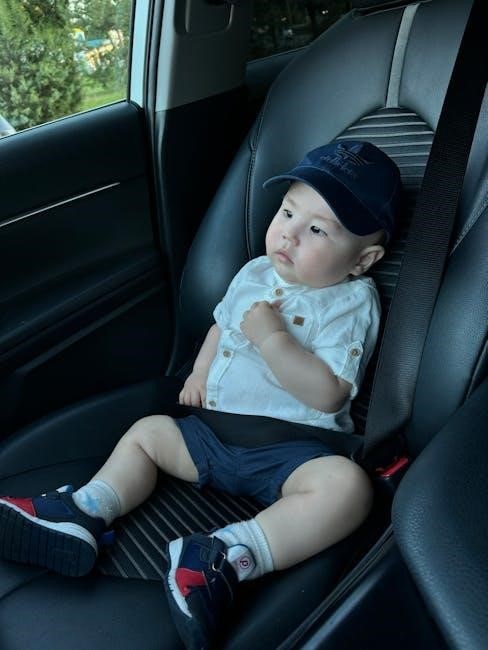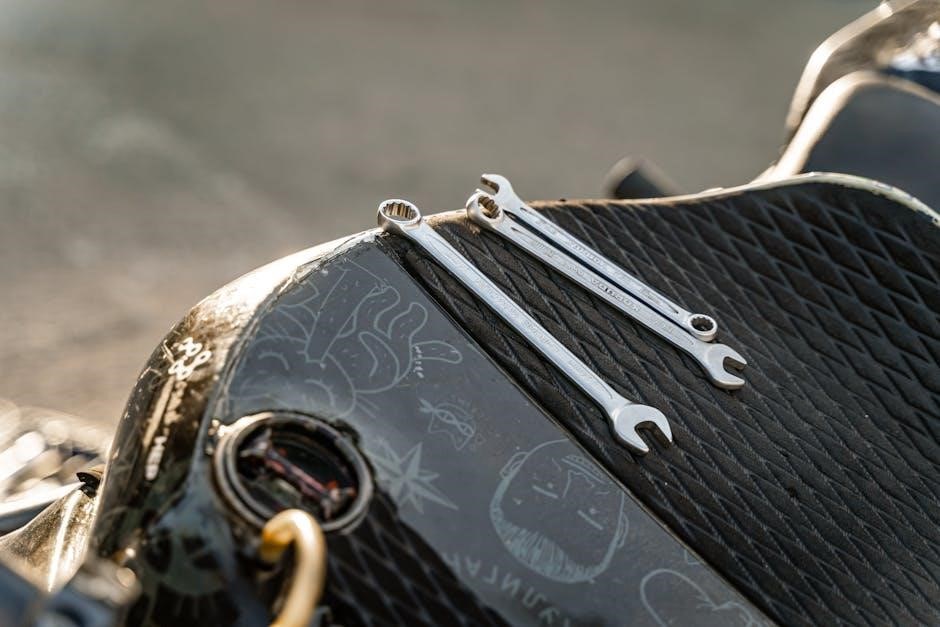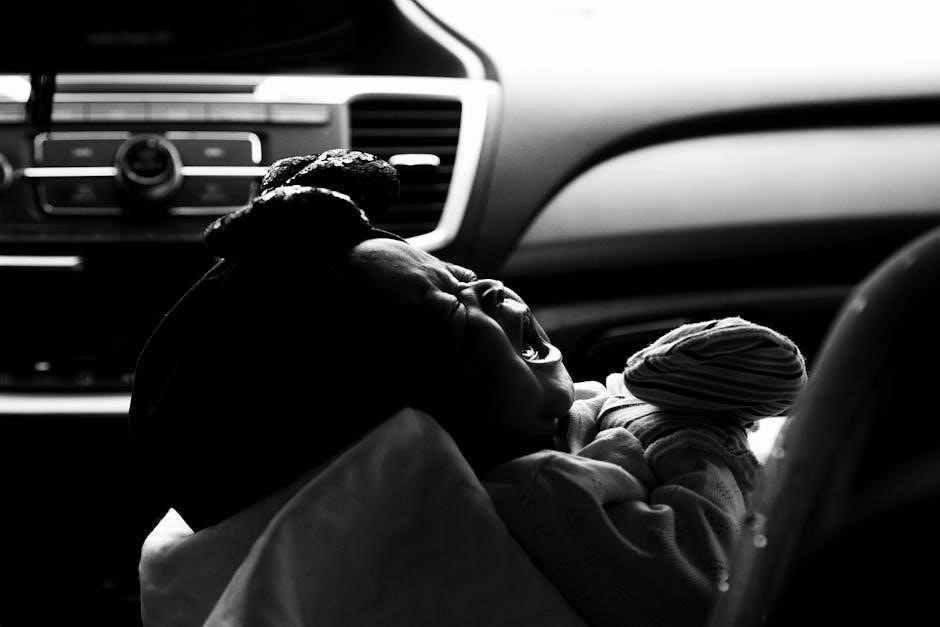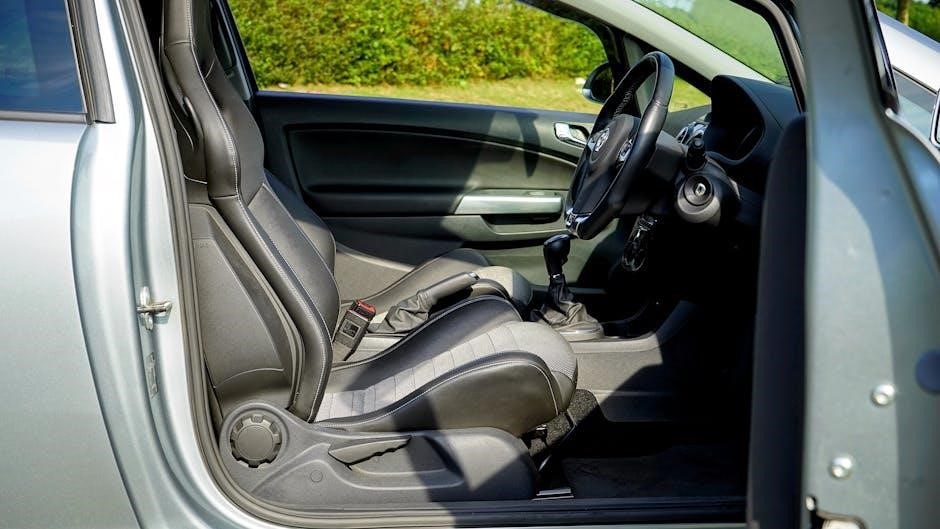Chicco KeyFit 30 Infant Car Seat Manual: A Comprehensive Guide
Welcome to your comprehensive guide to the Chicco KeyFit 30! This resource helps you understand its features‚ installation‚ safety‚ and maintenance․ This manual ensures correct use‚ to protect the child․
The Chicco KeyFit 30 is a popular infant car seat designed for safety and comfort‚ accommodating children from 4 to 30 pounds and up to 30 inches in height․ It can be installed using LATCH connectors or vehicle seat belts‚ offering versatility for different car models․ The KeyFit 30 prioritizes ease of use with features like a one-hand adjustable headrest․
This car seat is designed to protect your child in the event of a collision․ It also provides a secure and cozy environment for infants during travel․ Understanding the KeyFit 30’s features and proper installation is crucial for ensuring your child’s safety․ This guide provides comprehensive instructions․
Key Features and Specifications of the Chicco KeyFit 30
The Chicco KeyFit 30 boasts several key features designed for safety and convenience․ It includes a five-point harness system for secure restraint․ The car seat also has EPS energy-absorbing foam for enhanced impact protection․ The base features a ReclineSure leveling foot and RideRight bubble level indicators to achieve proper installation angle․
Specifications include a weight capacity of 4-30 lbs and a height limit of 30 inches․ It is compatible with Chicco strollers‚ creating a travel system․ The seat pad is removable and washable for easy cleaning․ The KeyFit 30 also features a canopy for sun protection and a newborn insert for smaller infants․
Weight and Height Limits
Understanding the weight and height limits of the Chicco KeyFit 30 is crucial for ensuring your child’s safety․ This infant car seat is designed for babies weighing between 4 and 30 pounds (approximately 2 to 13 kg)․ Exceeding the weight limit can compromise the car seat’s ability to protect your child in a collision․
In addition to weight‚ height is also a critical factor․ The KeyFit 30 is suitable for infants up to 30 inches in height (approximately 76 cm)․ Once your child reaches either the maximum weight or height limit‚ it is time to transition to a convertible car seat․ Regular checks of your child’s measurements is very important․

Installation Guide
Proper installation is critical for safety․ The Chicco KeyFit 30 offers versatile installation options․ The LATCH system‚ vehicle seat belt and no-base installation are also available․ Following the instructions ensures a secure fit․
Installing with the Base: LATCH System
The LATCH (Lower Anchors and Tethers for Children) system offers a secure and straightforward method for installing your Chicco KeyFit 30 base․ First‚ locate the LATCH anchors in your vehicle‚ consulting your vehicle’s manual for their exact placement․ Next‚ attach the KeyFit 30 base’s LATCH connectors to these anchors‚ ensuring a firm and audible “click․” Tighten the LATCH straps by pulling on the adjustment strap‚ removing any slack․ Check the base’s stability; it should not move more than one inch in any direction․ Finally‚ confirm the recline angle is correct using the indicator on the base․ This ensures your child’s safety and comfort during travel‚ providing peace of mind․
Installing with the Base: Vehicle Seat Belt
Installing the Chicco KeyFit 30 base with a vehicle seat belt is a viable option if LATCH isn’t available or preferred․ Begin by placing the base on the vehicle seat․ Thread the vehicle’s lap and shoulder belt through the designated belt paths on the base․ Secure the seat belt buckle‚ ensuring a tight fit․ Engage the shoulder belt lock-off (if equipped) to prevent loosening․ Firmly push down on the base while tightening the seat belt to eliminate slack․ The base should move less than one inch․ Verify the recline angle indicator shows the correct position․ Always consult both the car seat and vehicle manuals for guidance․
Installing Without the Base
Installing the Chicco KeyFit 30 without the base provides flexibility‚ especially when traveling or using taxis․ Place the car seat rear-facing on the vehicle seat․ Thread the vehicle’s lap belt through the designated belt guides on the carrier․ Ensure the belt is routed correctly and securely buckled․ Tighten the lap belt to eliminate slack‚ ensuring a snug fit․ The carrier should not move more than one inch in any direction․ Check the recline angle to ensure the baby’s head doesn’t slump forward․ Always refer to your Chicco KeyFit 30 manual and your vehicle’s manual for detailed instructions and safety guidelines․

Using the Car Seat
Once installed‚ properly secure your child․ Adjust the harness for a snug fit․ Learn to adjust the handle and canopy for your child’s comfort and protection․
Securing Your Child: Harness Adjustment and Chest Clip
Ensuring your child is safely secured in the Chicco KeyFit 30 involves proper harness adjustment and chest clip placement․ To begin‚ loosen the harness by pressing the adjuster button and pulling forward on both straps․ Place your child in the seat‚ ensuring their back is flush against the seat․
The harness straps should be positioned at or below your child’s shoulders when rear-facing‚ select the closest slots․ Insert the buckle tongues into the buckle‚ listening for a click to ensure they are latched․ Tug on the tongues to verify․ Tighten the harness by pulling the adjuster strap until snug‚ ensuring you cannot pinch excess webbing at the child’s shoulder․
Position the chest clip at armpit level․ Never secure your child in bulky clothing․ Always confirm that harness straps fit correctly!
Adjusting the Handle and Canopy
The Chicco KeyFit 30 features an adjustable handle and canopy to enhance convenience and your child’s comfort․ The handle has three locked positions: carry‚ stroller‚ and stationary․ To adjust‚ press both buttons near the pivot points simultaneously and rotate the handle to the desired position‚ ensuring it locks into place․ Be sure handle is LOCKED in CARRY position․
The canopy provides shade and protection from the elements․ Grab the canopy bow on both sides and rotate it forward or backward to adjust․ Detach the fastener tabs when rotating toward the front․ To remove the canopy fabric‚ detach from the mount․ These adjustments ensure a comfortable and safe ride․

Safety Information and Warnings
Prioritize your child’s well-being by understanding critical safety guidelines․ This section outlines essential warnings and precautions for using the Chicco KeyFit 30 correctly‚ minimizing risks‚ and ensuring a secure environment․
Important Warnings from the Manual
The Chicco KeyFit 30 manual emphasizes critical warnings for your child’s safety․ Never use this restraint in a seating position where it cannot be tightly secured․ A loosely installed car seat will not protect your child in a crash․
Do not use accessories or products not included with the car seat unless specifically approved by Chicco‚ as doing so voids the warranty․ Always check buckles and parts for hot surfaces that could burn the child․ Ensure the harness is snug‚ as a loose harness could cause ejection during a sudden stop․
Accident statistics indicate children are safer in rear seating positions․
Proper Use Checklist
Before each ride‚ ensure your child’s safety with this checklist․ Is the car seat correctly installed‚ using either LATCH or the vehicle seat belt? Double-check the installation’s tightness; it shouldn’t move more than an inch․ Are the harness straps positioned at or below your child’s shoulders?
Is the chest clip positioned at armpit level? Confirm the harness is snug‚ allowing only one finger to fit between the strap and your child’s collarbone․ Never dress your child in bulky clothing that prevents proper harness tightening․ Always use the newborn insert for smaller infants to ensure a secure fit․
Maintenance and Care
Keep your Chicco KeyFit 30 clean and in good condition with proper maintenance․ Regular cleaning and care ensures longevity and safety․ Follow our guide to maintain your car seat․
Cleaning Instructions
To maintain the cleanliness of your Chicco KeyFit 30‚ regular cleaning is essential․ For spot cleaning‚ use mild soap and water on the affected areas․ Avoid using harsh chemicals or bleach‚ as they can damage the fabric and plastic components of the car seat․ Ensure all parts are completely dry before reassembling and using the car seat․
For a more thorough cleaning‚ the fabric seat pad can be carefully removed and hand-washed or machine-washed on a delicate cycle with cold water and mild detergent․ Hang the fabric to dry․ Never place the fabric in a dryer․ Regularly wipe down the plastic parts with a damp cloth to remove dirt and debris․
Fabric Care and Washing Instructions
Maintaining the fabric of your Chicco KeyFit 30 is crucial for hygiene and longevity․ The seat pad is removable for cleaning․ For minor stains‚ spot clean with a gentle soap and water solution․ When a deeper clean is needed‚ hand wash or machine wash the pad separately on a delicate cycle using cold water and a mild detergent․
Avoid using bleach‚ harsh chemicals‚ or solvents‚ as they can damage the fabric․ Always allow the fabric to air dry completely before reattaching it to the car seat frame․ Do not put the fabric in the dryer;

Troubleshooting
Encountering issues with your Chicco KeyFit 30? This section addresses common problems‚ offering step-by-step solutions․ From installation difficulties to harness adjustments‚ find the answers you need for a smooth and safe experience․
Common Installation Issues and Solutions
Installing the Chicco KeyFit 30 correctly is crucial for your child’s safety․ Many users face similar challenges during setup․ One frequent issue is achieving a secure fit with either the LATCH system or vehicle seat belts․ Ensure the base doesn’t move more than an inch in any direction after installation․ If using LATCH‚ confirm the connectors are firmly attached and the straps are tightened appropriately․
With seat belts‚ utilizing the lock-off feature can stabilize the base․ Another concern is the car seat’s recline angle; the indicator must be within the acceptable range․ Adjust the base’s recline foot to achieve the correct angle․ Always consult your vehicle’s manual for specific guidance on car seat installation․ If problems persist‚ seek assistance from a certified car seat technician․